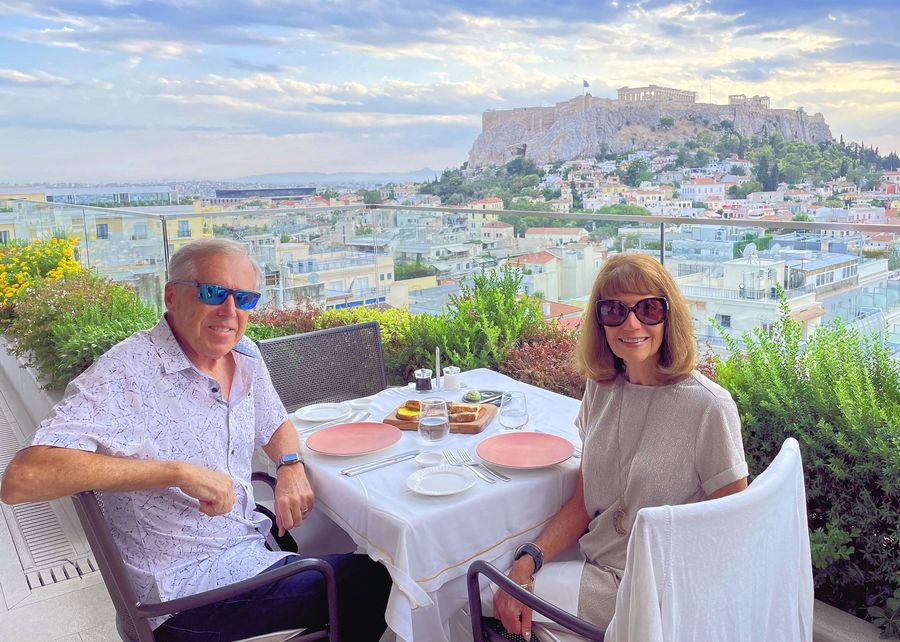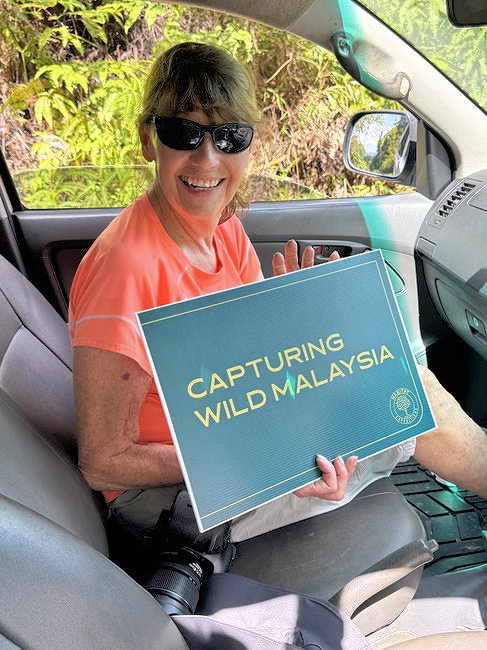ATHENS…AMAZING, ALLURING…AND SO ANCIENT

Greece was on our travel radar for many years, and we finally made it happen! Paris and the island of Guernsey were tiring but we did our best to rally. Our base was the Electra Metropolis Hotel in the Syndagma district. We had dinner on the terrace of our hotel. The view of the Acropolis was magical.

A fabulous sunset casts magnificent rays.

We booked a private half-day tour of the ruins of the Acropolis and the Acropolis Museum.

The rooftop bar at our hotel featured fabulous cocktails and wines with a sensational view of the illuminated Acropolis.

It was amazingly hot as we started the climb up the steps to the Acropolis, also known as the” Sacred Rock” of Athens. August is obviously not the best month to travel to Greece, but we needed to coordinate with the travel schedule of our grandson Paxton. I was very worried that it would be too difficult for Marla! Below us is the Odeon of Herodes Atticus built in 161 during the period of Roman rule. Amazingly, it is still used to this day!

The crowd climbs the stairs toward the Proplaia, the grand entrance to the upper temples.

I was very proud of Marla on this hot August day. Our guide was very informative and sensitive to our pace and needs.

The majestic Pathenon in the background once housed a giant gold and ivory sculpture of the goddess Athena. In the 5th century it was used as a church and during the Ottoman occupation it was a mosque. The building which housed Ottoman gunpowder was almost destroyed in 1687 when the Venetians shelled it. Further damage was done by Lord Elgin between 1800 to 1803 when sculptures and architectural elements were removed and shipped to England. The Greek government is negotiating to have them returned, a work still in progress.

Erechtheion is a striking building with Caryatid columns sculpted as women shown on the upper right. It was constructed between 421 and 406 BCE as part of Pericles‘ great project to rejuvenate the architecture of the great city. It houses shrines to several different deities, including Athena, Zeus and Poseidon. It is named for the mythic King Erechtheus who judged the contest between Athena and Poseidon to determine the patron deity of Athens. The Caryatids are actually reproductions for protection from the elements.

Marla listens to our guide next to the Parthenon.

The heat was really getting to Marla, so our guide received permission for her to come down the Acropolis by the outside elevator. The driver picked us up and drove us to the modern Acropolis Museum. Under the glass walkway are the ruins of an early Christian settlement.

The modern museum was designed by the architect Bernard Tschumi and opened to the public in 2008.

The museum beautifully displays treasures from the Acropolis.


The magnificent Caryatid pillars which supported Erechtheion’s porch are beautifully displayed. Five of the original six sculpted Korai, or young women, are seen here, while the sixth is in the British Museum. The one on the left was smashed by a Turkish cannonball.

Lunch at Ergon House was an amazing find. The restaurant features a large natural produce, meat market, wine and cheese shop. We both gave it a 10 out of 10!

On our last day we toured the fabulous National Archaeological Museum of Athens. It is the largest archaeological museum in Greece and one of the most important museums in the world devoted to ancient Greek art. It was founded at the end of the 19th century to house and protect antiquities from all over Greece.

Some of you with a more prurient focus may envision Marla thinking…“Wow…what a hunk!” She actually is admiring the “Atalante Hermes” 2nd AD marble sculpture found at Atlante, Phthiotis, of the god Hermes.

The striking life-size Hellenistic bronze statue of a young jockey and his racehorse is called the “Artemision Jockey.” It was retrieved in pieces from a shipwreck. It is dated 150 to 140 BC.

This is one of my favorites in the museum. It is a 460 BC bronze statue of Zeus or Poseidon. It was found in the sea of Cape Artemision, in northern Euboea.

This gallery displayed a large collection of lekythos. These vases were designed to hold oil and were used in a number of different ways in funerary ritual.

The soldiers in white are called “Evzones” and are known for their distinctive uniforms. Evzones were insurgents who fought during the Ottoman occupation of Greece.

We took a hot and exhausting bus tour of Athens. This is the Monastiraki Square with the Tzistarakis Mosque in the center. The ever-present Acropolis looms majestically above.

We relax on our terrace with some fruit and a little libation after a rather hot and exhausting day.
Next week we explore the magical, little-known neighborhood of Anafiotika.
Photos: Dick gentry. Not to be used without permission.
About The Author
admin
Related Posts
THE TRAIN TOOK US TO WILD MALAYSIA…TO PENANG AND HISTORIC GEORGE TOWN ON PENANG ISLAND
Our Malaysian adventure continues with a stop at the Taman Negara National Park. Children from…
October 21, 2022AN AMAZING EXCURSION ON THE BELMOND EASTERN & ORIENT EXPRESS THROUGH THE JUNGLES OF MALAYSIA
Having a 3-night Belmond train excursion as a component of our AHI “Treasures…
October 21, 2022

Leave A Comment